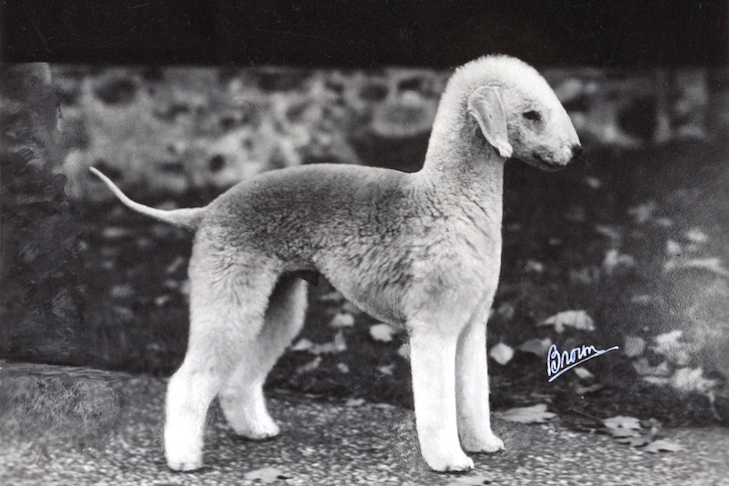
Dogdom has quite a few breeds that take their inspiration from other species: The dainty Papillon is named for its butterfly-evoking ears. The Shar-Pei is always channeling its inner hippopotamus. And a number of Asian breeds, from the Pekingese to the Tibetan Spaniel, were intentionally bred to evoke the king of beasts in miniaturized form.
But when it comes to dead ringers, no breed can upstage the Bedlington Terrier: From its sculpted, crispy-linty coat to its tassel-tipped ears, it looks for all the world like a lamb.
Take care, though, not to be lulled into a false sense of complacency: “The Head of a Lamb and the Heart of a Lion” is the Bedlington Terrier Club of America’s motto, and for good reason: Under that innocent-looking exterior is a merciless hunter of vermin who has an endless reservoir of stamina and courage.
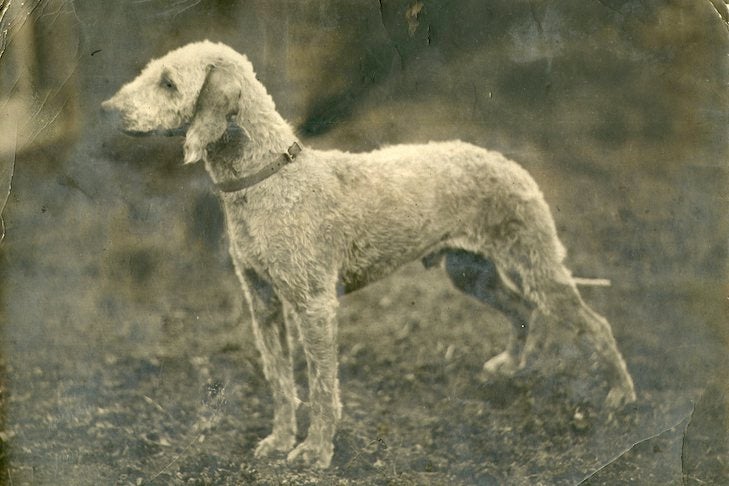
The Many Breeds Behind the Bedlington
If its lamblike appearance belies the serious terrier beneath, the Bedlington is also a bundle of incongruities, thanks to the intriguing variety of breeds that reportedly were involved in its creation. What else to think of a terrier that loves the water, has the speed of a sighthound, and adores romping in fresh snow? It’s a walking – to say nothing of a galloping and trotting and swimming – contradiction.
Structurally, one of the most unusual aspects of the Bedlington is the obvious arch over its loin – a speed-inducing modification that is usually found in Sighthounds. Indeed, the Whippet is believed to be a contributor to the Bedlington Terrier gene pool; both breeds were favorite contenders in the weekend races that miners held to blow off steam after a long, hard, and coal-streaked week beneath ground.
Scenthounds, too, reportedly left their mark on the Bedlington. An Otterhound influence is likely responsible for the breed’s love of water, and its proficiency in dispatching otters: While today we consider those whiskered water weasels to be clownish and charming, in previous centuries they were hunted either for their fur or, in the case of large estates, to keep them from depleting fish stocks.
The Bedlington’s progenitors might also have included a Bull Terrier, which would have added a gameness that persists to this day: An intolerance of other canines is pretty much standard operating procedure when it comes to Bedlingtons, and they seldom pass up the opportunity to scrap with their own kind.
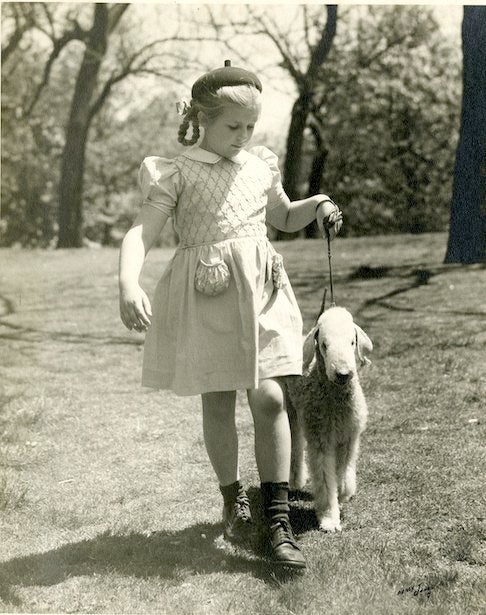
The Mining Town of Bedlington
Like so many of the British terriers, the Bedlington is named after a place – specifically, the mining town of Bedlington in Northumberland in northeastern England. Because travel was difficult, entirely different and distinctive strains of terriers evolved in the somewhat isolated valleys and villages on both sides of the border with Scotland.
The Bedlington Terrier wasn’t called by that name until 1825. Previously, it was known as the Rothbury Terrier – again, a geographical reference to the village of Rothbury, where early breeder and mason Joseph Aynsley lived. His dog, Aynsley’s Piper, was renowned for his “great pluck and courage.” Started on badgers at the tender age of eight months, Piper continued to hunt until he was 14 years old, when he was practically toothless and blind. Among the other exploits that added to Piper’s already burnished reputation was keeping an enraged pig at bay until help arrived so it would not attack a nearby child.
It was Aynsley who first referred to his dogs as Bedlington Terriers, perhaps in an effort to distinguish them from other types of earthdogs that could be found in the Rothbury area. Indeed, the Bedlington is believed to have come from the same rootstock as the Dandie Dinmont; both breeds have crisp coats and distinctive topknots, with the Bedlington evolving into a lithe, long-legged terrier, while the Dandie, with the addition of some Hound blood, morphed into a short-legged, heavier-bodied dog.
Even if its earliest origins are stubbornly obscured, no terrier breed has been documented as far back as the Bedlington, whose pedigrees trace to a dog named Old Flint, whelped in 1782. Or maybe 1792 – no one is quite sure. Question marks also surround Flint’s background, with some suggesting he might have descended from the Rough Scotch Terrier, a now-extinct family of dogs common in the area.
What is indisputable, though, is that this headstrong terrier was valued and perpetuated by English dog lovers from all strata of social life. Old Flint’s breeder was Squire Trevelyan, who lived in grand Netherwitton Hall, which still stands today. Similarly, Lord Rothbury was also smitten with the breed, leading to the dogs being referred to occasionally as “Rothbury’s Lambs.”
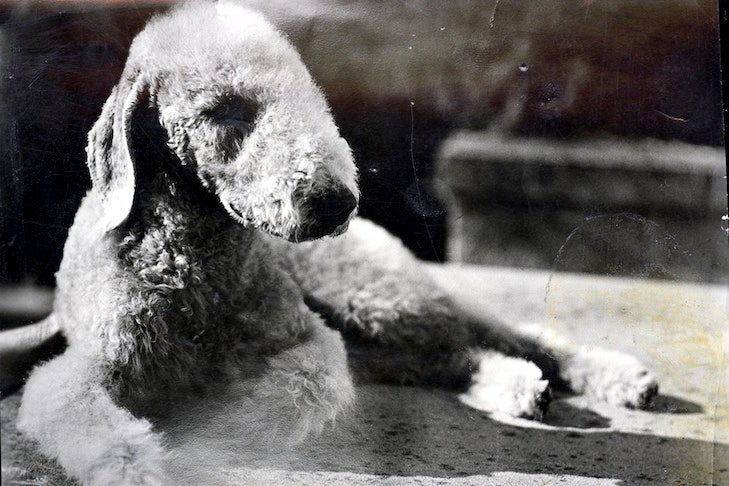
From Hunter to Showdog
While its earliest fans arguably were the landed gentry and clergy, the Bedlington Terrier was also embraced by less lofty social classes. A visiting Hungarian nobleman in the early 1700s who noted Bedlington-like dogs on Lord Rothbury’s estate also noted similar-looking ones accompanying the travelers encamped in Rothbury Forest; they resembled small Greyhounds, he wrote in his diary, “with hair like that of the lamb.” The dogs were also valued by poachers, who could rely on their speed, stealth, and intense prey drive to snag that evening’s dinner.
Bedlingtons eventually arrived on the dog-show scene, being exhibited for the first time in 1870. Blue, liver, or sandy in color, the dogs carry a graying gene that ensures that while puppies are born black or dark brown, they lighten to gray or liver, respectively, with age. The breed’s distinctive topknot, along with the tassels on its ears, reputedly helped protect its eyes and ears by offering a fuzzy distraction when face to face with a furious badger or marten. But the breed’s overall grooming, which requires fastidious thinning and trimming, evolved among owners and handlers in the Victorian show ring. The sculpted silhouette they favored in an attempt to accentuate the outline and create a competitive edge has become the traditional way the breed is presented at dog shows.
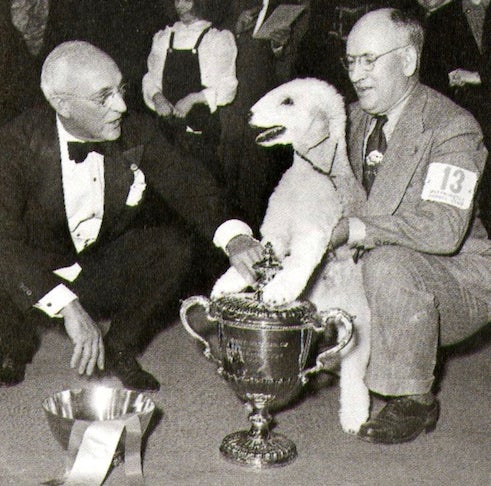
On this side of the Atlantic, Bedlingtons were used more for snagging ribbons than underground quarry. Its biggest boosters, coal miner Anthony Neary and his wife Anna, arrived in Pennsylvania from Bedlington in 1929 with their terriers in tow. A decade later, Standard Oil heir William Rockefeller persuaded the couple to relocate to his estate and run his Rock Ridge breeding program. That led to the breed’s most high-wattage moment, when Ch. Rock Ridge Night Rocket took Best in Show at the 1948 Westminster Kennel Club Dog Show, piloted by Neary. It was the biggest win ever logged by the breed on American soil, occasioning “Rocket” to be featured in LIFE magazine. He was also Best in Show consecutively – in 1947 and 1948 – at Morris & Essex, the iconic show run by Rockefeller’s sister, the impossibly rich Geraldine Rockefeller Dodge.
After more than 150 years as a show dog, the Bedlington Terrier still retains its determined, loyal personality, as new owners invariably discover. In this respect, that popular proverb about the month of March, “In like a lamb, out like a lion,” applies – albeit in reverse.

